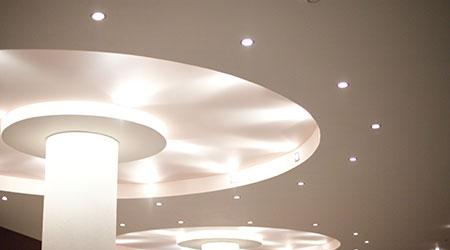 Managers must make the decision to upgrade existing lighting only after careful evaluation.
Managers must make the decision to upgrade existing lighting only after careful evaluation. LED Upgrades That Succeed
Careful consideration of savings, compatibility and output can help managers plan and complete effective projects.
While LED technology is rapidly changing the lighting industry, fluorescent lighting is still the most common lighting source in institutional and commercial buildings. Many facilities have upgraded to LED lighting as part of retrofit projects. Some have even carried out these updates as part of a facility upgrade.
Managers must make the decision to upgrade existing lighting only after careful evaluation. Whether operating a health care facility, commercial office building, or education institution, managers have many factors to consider.
Why upgrade?
Updating lighting is essential to maintaining a modern facility in both appearance and performance. When determining if the change from fluorescent to LED lighting is right for a facility, the efficiency and longevity of the use and appearance of the lighting is essential.
One key factor in upgrading to LED lighting is energy efficiency. Lighting is the largest user of electricity in these facilities, according to data from the U.S. Energy Information Administration. Lighting accounted for about 17 percent of electricity consumed in commercial buildings in 2012, which is consistent across buildings of different sizes. Managers often consider upgrading to energy-efficient HVAC systems, but they are not always aware of the potential savings that could be attributed to replacing existing fluorescent tube lights with more modern LED options.
Consider a 4-foot, 32 Watt (W) T8 fluorescent lamp that uses 34 W when in use due to typical inefficiencies with the ballast. A ballast regulates the current and makes sure fluorescent lamps have sufficient voltage to start. If this lamp were to operate continuously throughout the day for a full week, the annual consumption would be 297.8 kilowatt hour (kWh). The equivalent LED tube uses 16 watts. If operated in the same manner, it would consume only 140.1 kWh in a year of continual use.
Using an energy cost of $0.12 per kWh, this is a savings of about $19 per year for one lamp, or $57 per year for a three-lamp fixture. Replacing 100 of these fixtures would equate to an annual savings of $5,700.
When considering the lamp life of fluorescent lights versus LEDs, the difference is astronomical. The average lamp life for a 4-foot, 32W T8 fluorescent tube is about 20,000 hours. The average L70 rating — which represents the point at which a fixture’s light output has regressed to 70 percent of its original installed output — for a comparable 16W LED is 50,000 hours. Some LED fixtures even have a projected life of about 225,000 hours.
When considering the differences between LED and fluorescent lamp fixture life expectancies, managers need to understand one key to make a fair comparison between the two light sources. Fluorescent lamps possess a visible indication of failure that often presents itself through flickering — otherwise known as strobing — or by just completely shutting off. Unlike fluorescent light sources, the light output from an LED source continually lessens over the life of the fixture rather than burning out.
When planning lighting in a space that will use LED fixtures, designers base their models around L70, the minimum usable light value. The lighting community developed the lifespan rating standards for LEDs and based them on the amount of time it takes for the light output to fall below usable levels.
If an LED lamp fully fails, it is a sign of a production defect rather than a sign of the fixture reaching the end of its true, full designed life. If an LED fixture does fail in this manner, it will often occur in the first few years of use and is generally covered by a manufacturer warranty. If managers make the decision to upgrade lighting, this detail is an important reminder to always consider reputable manufacturers in selecting new LED lamps or fixtures.
Related Topics:














